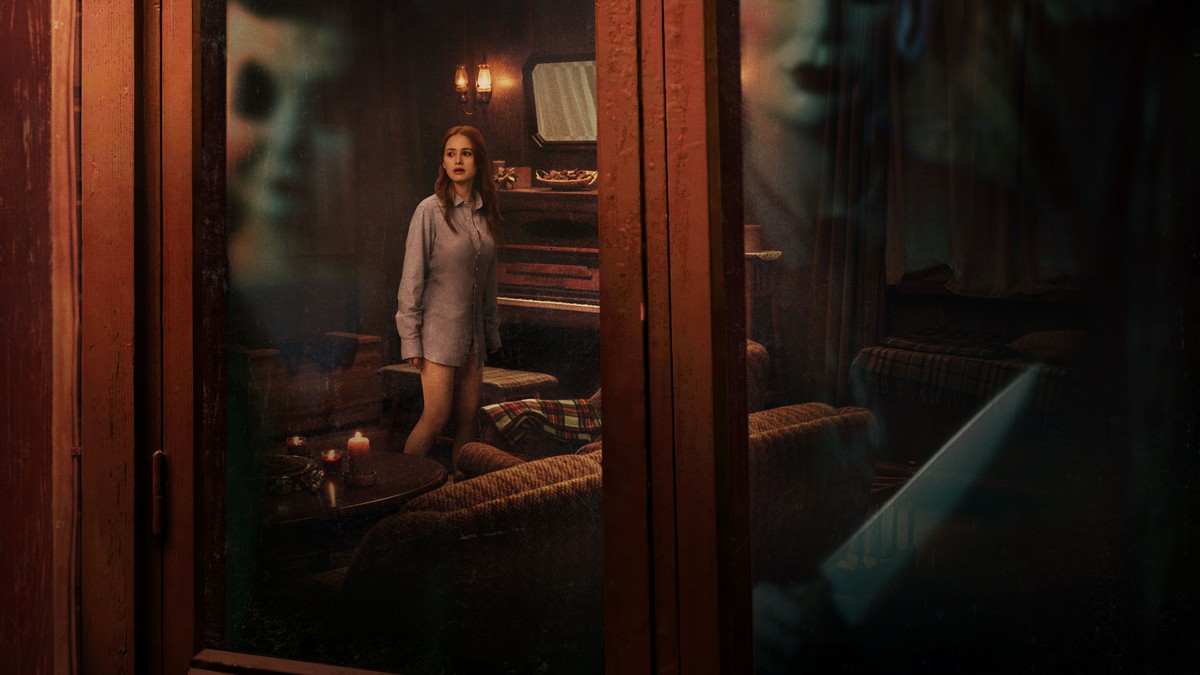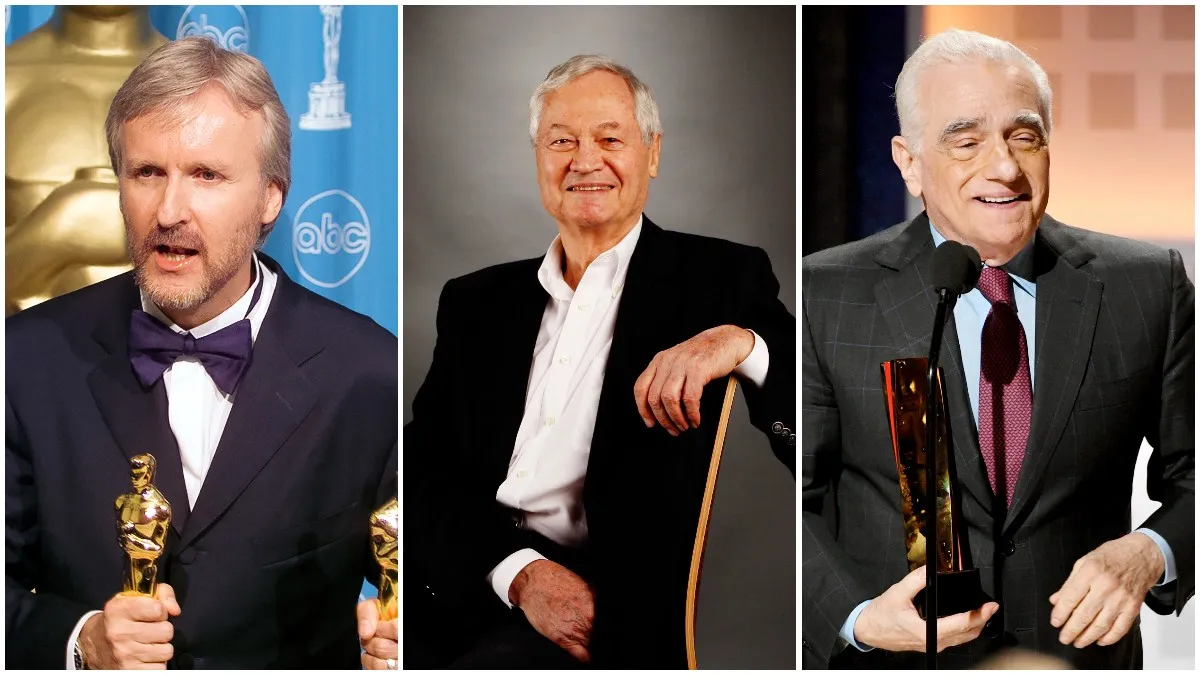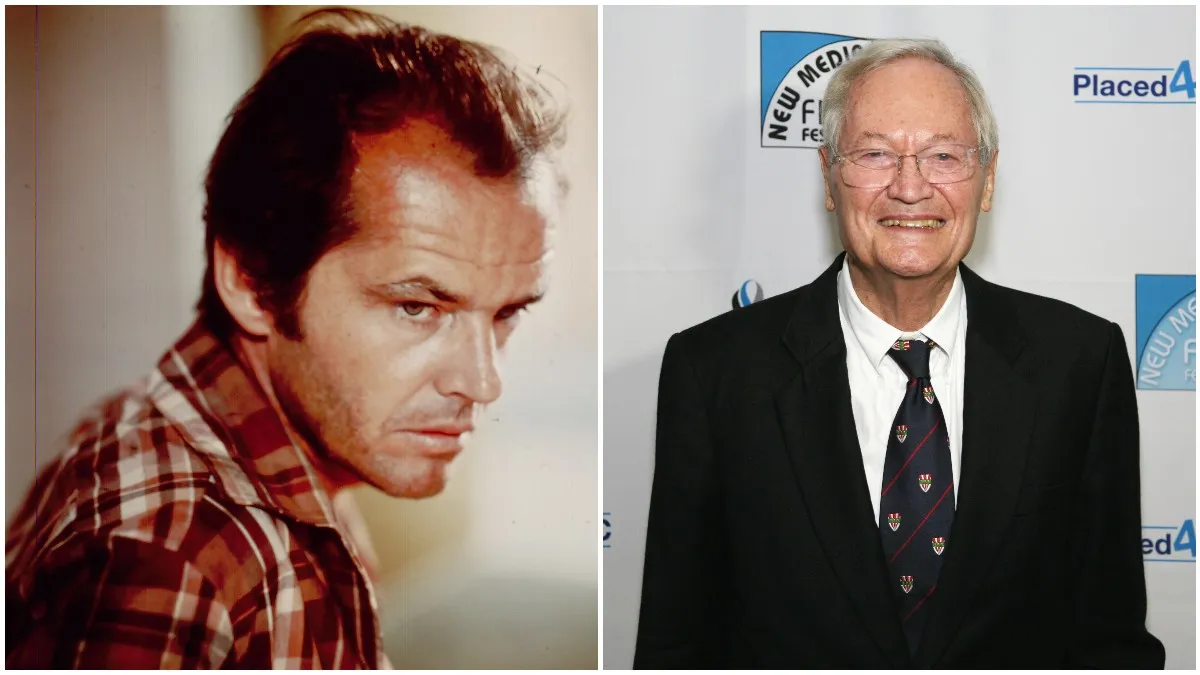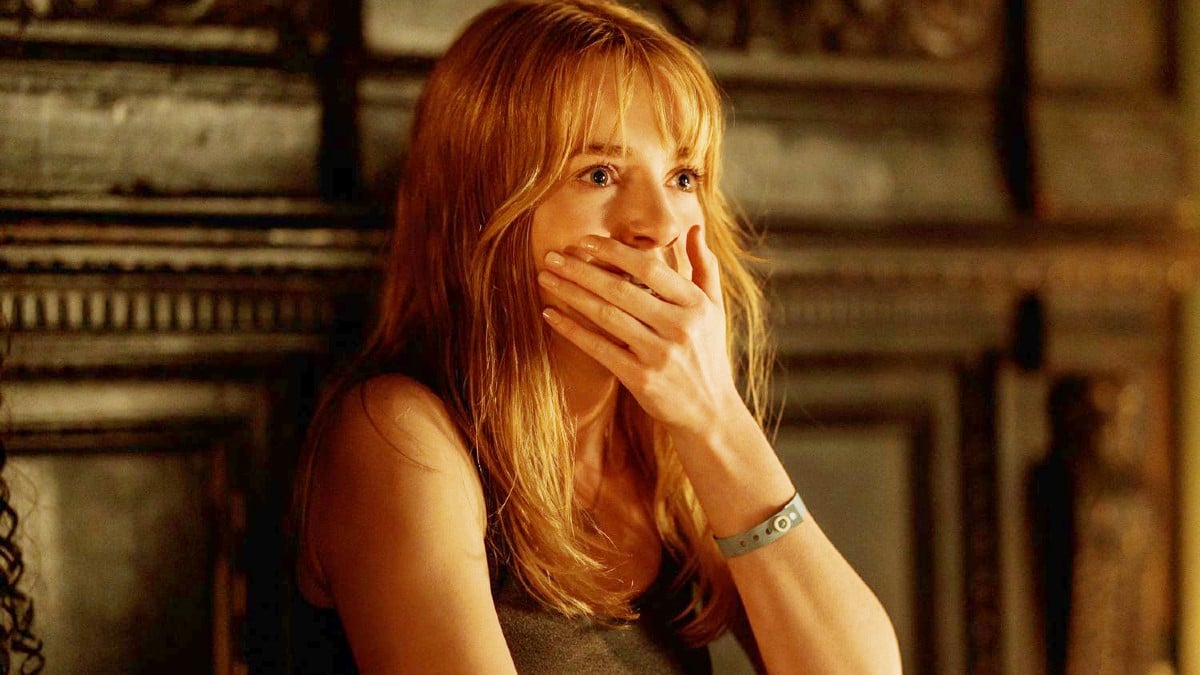The Scream franchise has returned to its former glory thanks to 2023’s Scream, which won Best Movie at the 2023 MTV Awards. The original Scream, directed by Wes Craven, revitalized the horror genre in the late 1990s by deconstructing old horror clichés while delivering genuine thrills; a unique combination of intriguing characters, clever writing, and thrilling horror set-pieces, with outstanding performances from Neve Campbell, Courteney Cox, and David Arquette.
As a result, the Scream franchise has become a staple of the genre, beloved by both die-hard horror enthusiasts and casual viewers alike. The series is notable for its meta-commentary on horror films, distinctive masked villains, and unique blend of horror and comedy. For fans of the Scream franchise, here are other equally terrifying films that have spawned their own franchises and garnered millions of fans.
I Know What You Did Last Summer
The first installment in the I Know What You Did Last Summer film series, released in 1997, was directed by Jim Gillespie and written by Kevin Williamson (who also wrote the Scream films). Based on Lois Duncan’s 1973 novel of the same name, the film stars Freddie Prinze Jr., Sarah Michelle Gellar, Ryan Phillippe, and Jennifer Love Hewitt in the original film about four high school buddies. After a night of graduation celebrations, one hits a pedestrian on a dark, winding road. Concerned about the possible fallout, they hastily dispose of the body and agree to forget what happened.
However, when they start getting weird notes the following summer, it becomes clear that someone is aware of their secret. I Still Know What You Did Last Summer (1998) and I’ll Always Know What You Did Last Summer (2006) are continuations of the original film. The sequels included many of the same actors and continued the story in the same tense fashion as the original. However, none of the original actors returned for the third installment, though it maintained the series’ pattern of combining teen drama with suspenseful horror. The franchise’s TV show debuted on Amazon Prime in October 2021, demonstrating the concept’s continued viability.
A Nightmare on Elm Street
The 1984 Wes Craven picture A Nightmare on Elm Street launched a successful horror franchise. The original picture stands out among its peers because of its novel premise, memorable antagonist, and deft combination of horror and psychological thriller elements. Freddy Krueger, portrayed by Robert Englund, is one of the most iconic horror movie villains. Krueger is a child murderer who was burned to death by the parents of his victims and now haunts the nightmares of the children of Elm Street.
With a charred face, a dusty fedora, a red and green striped sweater, and a glove armed with razor-sharp blades, his signature appearance has become a recognizable icon of horror. Numerous sequels to A Nightmare on Elm Street explored Freddy Krueger’s origins and the legends surrounding his abilities in greater depth than the first film. Among the best is A Nightmare on Elm Street 3: Dream Warriors, which many viewers consider the series’ pinnacle due to its unique dream sequences and in-depth examination of the franchise’s characters and themes.
Candyman
The original Candyman movie was released in 1992, directed by Bernard Rose, and based on Clive Barker’s short story The Forbidden. The franchise is known for its blend of horror and social commentary and its chilling antagonist, the Candyman himself. In the first Candyman, graduate student Helen Lyle (played by Virginia Madsen) examines urban legends for her thesis. She comes upon the story of Candyman (played by Tony Todd), a mysterious killer that haunts a Chicago slum area.
Candyman, legend has it, was the son of an enslaved person who fell in love with a white woman. Upon discovering their relationship, a lynch mob bathed him in honey and let bees sting him to death. Now, legend has it that Candyman will materialize and kill whoever says his name five times in front of a mirror. The film’s blend of otherworldly horror and real-world concerns, like racism and classism, makes it stand out from other entries in the horror genre. Instead of being a generic monster, Candyman represents the suffering of African Americans throughout history.
Halloween
John Carpenter’s 1978 film Halloween is a horror genre classic. The film has significantly impacted the evolution of the horror genre, especially the slasher subgenre, thanks to its minimalistic aesthetic, tense narrative, and memorable antagonist. Halloween revolves around Michael Myers, a six-year-old boy who murders his older sister on Halloween night. After spending 15 years in a mental institution, Myers escapes and returns to his hometown of Haddonfield, Illinois, where he begins stalking a group of teens, including Laurie Strode, played by Jamie Lee Curtis in her feature picture debut.
One of the most scary villains in horror, Myers wears a pallid, soulless mask and is an unrelenting, seemingly unstoppable force. His complete, unadulterated wickedness is amplified by the fact that he acts without any discernible motive. Halloween generated multiple sequels, remakes, and reboots, many of which continued Michael Myers and Laurie Strode’s feud.
Friday the Thirteenth
The first Friday the 13th film, directed by Sean S. Cunningham in 1980, kicked off a successful horror franchise. The Friday the 13th franchise has considerably impacted the horror subgenre with its trademark hockey mask killer, Jason Voorhees, and its campy, often horrific, slasher aspects. The original Friday the 13th occurs at Camp Crystal Lake, a haunted summer camp. The film follows a group of counselors preparing for the camp’s reopening, unaware that an unseen killer is hunting them.
Despite his iconic status, Jason Voorhees doesn’t become a major player in the franchise until subsequent installments. In the original film, the killer is Pamela Voorhees, Jason’s vindictive mother, who blames her son’s apparent drowning on the camp counselors. Even in Friday the 13th Part 2, Jason isn’t the main villain, and he doesn’t start wearing his iconic hockey mask until Friday the 13th Part III. The franchise is infamous for its high body count and gory death scenes. While this sparked debate and bad reviews from critics, it also helped the films gain a cult following among horror fans.
The Texas Chainsaw Massacre
In 1974, Tobe Hooper directed The Texas Chainsaw Massacre, a movie that pushed the boundaries of horror with its visceral and intense depiction of terror. The plot revolves around friends traveling to rural Texas to check on one of their family’s historic homesteads. There, they come into a family of cannibals led by the terrifying Leatherface, who terrorizes the party with his characteristic weapon, a roaring chainsaw.
Leatherface, who wears a human skin mask, is one of the most horrifying villains in horror film history. Although the film was billed as based on an actual event, it is only partially inspired by the atrocities of real-life serial killer Ed Gein, who also wore his victims’ skin. This connection to real-life events increased the film’s shock effect upon release. The film spawned a franchise, with sequels, prequels, remakes, and reboots all contributing to the Texas Chainsaw Massacre mystique. However, none have quite matched the raw terror of the original film.
Child’s Play
The 1988 Tom Holland film Child’s Play launched a successful horror franchise. Chucky, a doll possessed by the soul of a serial killer, is one of the most known horror movie icons since his introduction in the first film. In Child’s Play, a little boy named Andy Barclay is the focus after he is given a “Good Guy” doll for his birthday. Andy and his mom have no idea that the doll is possessed by the ghost of serial killer Charles Lee Ray or the “Lakeshore Strangler.” Before his death, Ray used voodoo magic to transfer his soul into the doll.
Brad Dourif’s outstanding voice performance as Chucky is one of the film’s notable elements. His eerie voice brings the murderous doll to life, making Chucky both horrifying and darkly hilarious. Child’s Play spawned a franchise with multiple sequels and a 2019 remake, each presenting a fresh perspective on the Chucky character and history. The franchise is notable for its blend of horror and dark humor, particularly in the later chapters, which lean into Chucky’s darkly funny side.
Psycho
Directed by the master of suspense, Alfred Hitchcock, Psycho is a horror genre classic. It was released in 1960 but has become a cinematic classic thanks to its groundbreaking story and performances. The story follows Marion Crane (Janet Leigh), a thieving secretary on the run from her boss, who checks into the remote Bates Motel. There, she meets the motel’s proprietor, the strange but seemingly harmless Norman Bates (Anthony Perkins). However, as the plot unfolds, Crane’s stay at the motel takes a chilling turn, leading to one of the most famous sequences in film history — the shower scene.
The film’s narrative structure was innovative in abandoning convention by killing off the film’s apparent protagonist. The film’s pervasive dread can be attributed to Hitchcock’s expert use of suspense and deception and Bernard Herrmann’s legendary, nerve-wracking music. One of Hitchcock’s best pictures and a masterpiece of horror cinema, Psycho was a box office success despite negative reviews and controversy surrounding its subject matter upon its initial release. Numerous following horror films and psychological thrillers can be traced back to it as an inspiration. More than that, Psycho has created a franchise that includes sequels, a prequel, a remake, and the TV series Bates Motel, which explores Norman Bates’s origins.
Saw
Saw is a horror film that launched the “torture porn” subgenre into mainstream cinema. The 2004 picture, directed by James Wan and written by Leigh Whannell, stands out for its powerful moments of psychological terror and creative, grisly traps. Saw depicts the Jigsaw Killer, the film’s primary antagonist, engaging in a sadistic game. Jigsaw, unlike most slasher villains, does not directly murder his victims.
On the contrary, he sets them complicated, lethal traps, or “games,” in which they must inflict great suffering on themselves or make unbelievable sacrifices to stay alive. If his victims are lucky enough to survive, he uses these games to teach them valuable lessons about life and death. Saw was financially successful, spawning a series of follow-ups and offshoots. Each installment provides more context for Jigsaw’s character arc and introduces sophisticated new traps. Although the subsequent films have varied in quality, the impact and originality of the first picture is undisputed.
Wrong Turn
The Wrong Turn franchise began with the 2003 film Wrong Turn, directed by Rob Schmidt and written by Alan B. McElroy. It is notable for its gruesome portrayal of rural terror and survival horror. The story centers around a group of six young people — Chris Flynn, Jessie Burlingame, Carly, Scott, Evan, and Francine — who, while on a road trip through West Virginia, make a wrong turn (hence the title) and find themselves stranded in the remote wilderness.
When they learn that they are not alone and that a pack of vicious cannibals is pursuing them, the real nightmare begins. Wrong Turn harkens back to the “hillbilly horror” flicks of the past. The suspense and mood of the picture are its strongest points. West Virginia’s deep, lonely forests create a claustrophobic and unsettling setting for the film’s tragic events.







